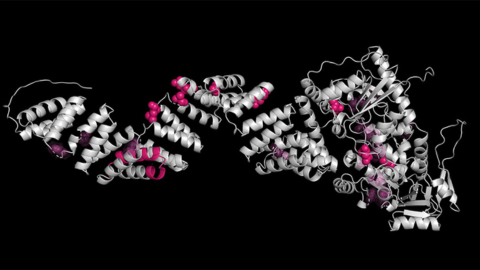From the known to the unknown
Preparing a manuscript can be daunting. Maybe you’re under a time crunch. Maybe you’re managing experiments for another project. Maybe this is also your first time writing a research paper.
I recently shared with you our tips for writing titles and abstracts. Now, we are moving on to the introduction.

Here, I am covering what I learned about writing introductions from “Writing Science: How to Write Papers That Get Cited and Proposals That Get Funded” by Joshua Schimel and “Essentials of Writing Biomedical Research Papers, Second Edition, by Mimi Zeiger.
Basic structure
Your introduction needs to tell us, your readers, what you set out to learn in your research and why we should be invested in the results. How do you organize your thoughts to accomplish this very important task?
Zeiger suggests structuring your introduction around three key components: stating the known information in your field, identifying the unknown information and posing a research question.
Schimel organizes these three elements of an introduction into what he calls an “opening” (known and unknown information) and a “challenge” (the research question).
Here are step-by-step instructions:
- Start with the broadest biological significance that is appropriate for your project. Tell us why your topic matters.
- Steadily add more detail to give us the facts we need to understand your particular manuscript. Keep this information focused and concise.
- Point out where more research is needed. Say exactly what specific information is unknown.
- Extend the unknown information to define the research question you want to answer. Do not leave this part out, even if it seems obvious what the question is; that just means you wrote a clear opening.
- Explain how you will answer the question. What experimental approach did you use in your research, and what were the objectives?
- Make your research question and approach the focal point of the introduction. No one wants to hunt for the main point. This statement is usually very distinct: “Here, our goal was to fill X knowledge gap by using Y method to characterize/analyze/measure Z.”
Things to consider
- Who is your intended audience?
- Are you planning to submit to a general science journal or a field-specific journal?
- Consider how big of a picture to convey in your opening and what terminology to use up front.
- Keep in mind that an introduction is not a review article. Take your readers as directly as possible from what is known to what is unknown.
- Construct a logical narrative that builds to the challenge; the research question. If you notice that you are bringing up new concepts in the challenge, find a way to introduce these concepts in the background information of the opening.
- For manuscripts about a new method:
- Communicate the current limitations for investigating the topic of interest.
- Then, propose the new method as a way to address these limitations and advance technology.
Want to learn more? The American Society for Biochemistry and Molecular Biology Publications Department will host the “Success in scientific publishing” workshop at Discover BMB 2024 in San Antonio. Check the meeting website for time and location.
Enjoy reading ASBMB Today?
Become a member to receive the print edition four times a year and the digital edition monthly.
Learn moreFeatured jobs
from the ASBMB career center
Get the latest from ASBMB Today
Enter your email address, and we’ll send you a weekly email with recent articles, interviews and more.
Latest in Careers
Careers highlights or most popular articles

Upcoming opportunities
Friendly reminder: May 12 is the early registration and oral abstract deadline for ASBMB's meeting on O-GlcNAcylation in health and disease.

Sketching, scribbling and scicomm
Graduate student Ari Paiz describes how her love of science and art blend to make her an effective science communicator.

Embrace your neurodivergence and flourish in college
This guide offers practical advice on setting yourself up for success — learn how to leverage campus resources, work with professors and embrace your strengths.

Upcoming opportunities
Apply for the ASBMB Interactive Mentoring Activities for Grantsmanship Enhancement grant writing workshop by April 15.

Quieting the static: Building inclusive STEM classrooms
Christin Monroe, an assistant professor of chemistry at Landmark College, offers practical tips to help educators make their classrooms more accessible to neurodivergent scientists.

Unraveling oncogenesis: What makes cancer tick?
Learn about the ASBMB 2025 symposium on oncogenic hubs: chromatin regulatory and transcriptional complexes in cancer.

